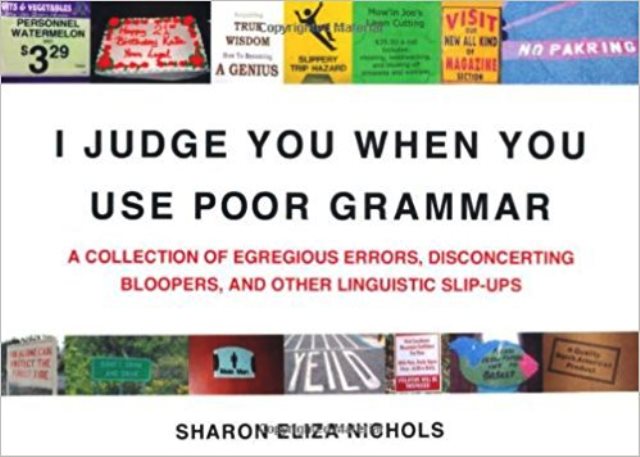
Image source: Amazon
Public relations professionals put great effort into crafting press releases, building a targeted media list, and developing relationships with reporters and editors. A seemingly small error can ruin those efforts.
More than a few PR agencies and departments have faced angry executives, suffered public ridicule, and lost revenue due to proofreading oversights such as misspelled names in headlines, incorrect prices and wrong dates for company events.
The following advice can help writers and editors improve proofreading and catch errors.
- Wait. Allow a few hours or a couple of days to pass after you finish writing before proofreading. “If you’re familiar with the story, your eye will glide right by the error. If you take a break, however, you’re far more likely to catch the problem,” advises Daphne Gray-Grant, principal of The Publication Coach.
- Re-examine the large type such as logos, company names and headlines – and, especially, subheads. Ironically, large, important items can somehow become invisible.
- Start at the end. Read backwards – the sentences, not the words. Read the last sentence first, then the second last sentence, then the third last sentence until you finish reading the piece. That forces you to read each sentence in isolation – breaking the familiarity with the piece that might cause you to miss errors, Gray-Grant says.
- Use an editing tool. Microsoft Word includes a spelling and grammar check, but it regularly misses certain types of errors like missing words. Many writers therefore advocate other online editing tools. Online editing tools such as Grammarly or the Hemingway App can spot clichés, redundancies, verbose wording, and other technical problems.
- Print it. Print the project and proofread that copy. Note corrections on the paper as you spot errors.
- A line at a time. Place a ruler or sheet of paper under the lines. This forces you to work much more slowly and stops your eye from jumping ahead.
- Read it aloud. “Although you might get some odd looks in the office, this tip works. You will hear how it sounds to readers and pick up on any errors that you otherwise wouldn’t have noticed,” writes Mary Walton, content manager at Boom Essays.
- Recheck numbers and names. Double-check proper names, email addresses and numbers, especially dates and prices.
- Call telephone numbers. “Don’t just double-check the phone number online, either. It could be wrong there, too. Pick up the phone,” urges PR expert Joan Stewart in Entrepreneur.
- Check links. Click on links to make sure they go to the intended website page without a 404 error. If a press release or article includes a call to action, the link must lead to that specific location, Stewart points out.
- Days and dates. Make sure days correspond with dates. If the copy says the event is scheduled for Saturday, Nov. 2, check the calendar to make sure Nov. 2 is a Saturday.
- Remember contact information. Some businesses hide behind online forms. Businesses that lack contact information on websites may be losing sales. Also include contact information in emails, marketing copy and press releases. Most press release distribution services now hide email addresses to avoid having the contact information scraped by spammers.
- Find a second pair of eyes. You can find freelance proofreaders on sites like Upwork or Freelancer, although someone in your company may be more familiar with the subject than outsiders. You can also call a local newspaper and ask if any of the copy editors do proofreading on the side, Stewart suggests.
- Read it again. Once revisions have been made, proofread the document again with the same thoroughness, rather than simply spot-checking the changes, says Mark Nichol at Daily Writing Tips.
Bottom Line: Proofreading is an indispensable public relations function. Without thorough proofreading, an embarrassing mistake will eventually end up in print or on a website. These tips can improve your proofreading skills to prevent such errors.
William J. Comcowich founded and served as CEO of CyberAlert LLC, the predecessor of Glean.info. He is currently serving as Interim CEO and member of the Board of Directors. Glean.info provides customized media monitoring, media measurement and analytics solutions across all types of traditional and social media.





I would like to thank you for sharing this amazing content with us. The most important point in the content is ‘Read it aloud’. After proofreading the document read it out loud so you can get the missed out errors.
If you use any Software or Tools that will help you best to improve your proofreading, it will also help to you in your initial days when you have lack of Proofreading skills even with the time you will catch your mistakes through tools like Grammarly.